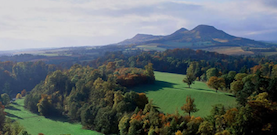New data analysis from Savills has revealed there was a 98% increase in buyers registering with the agency to purchase rural estates and property in Scotland in 2020 — with the forestry business and the push towards net zero acting as major drivers of the trend.
Savills said funds of almost £5 billion “are currently chasing Scottish rural property” and the total value of Scottish estates sold last year increased by 43% to £100 million.
The worldwide focus on the climate crisis and the drive for net zero is fuelling a “seemingly insatiable demand” for land in Scotland suitable for planting trees.
This is resulting in forestry investors offering up to three times more for land than the traditional agricultural buyer.
“Lockdown continues to amplify this trend, despite the fact that international buyers continue to be severely restricted from viewing Scottish property due to travel restrictions,” said Savills.
“As a result around 70% of Savills Scottish estate buyers last year were based in the UK albeit that the interest generated in those estates on the market was global.
“Funds of almost £5 billion are currently chasing Scottish rural property.”
Savills said the Scottish estate market is “rarefied” with only 23 rural estates — defined as a land holding which includes a mixture of asset or enterprise type like residential, farming or forestry — changing hands last year.
Around half of these were sold privately, without ever coming to the open market.
Evelyn Channing, Savills’ head of rural agency in Scotland, said a new surge in interest in Scotland’s larger estates can be explained by two key purchasing drivers — natural capital and forestry.
“We continue to receive our fair share of calls from buyers across the world, looking to hole up in Scotland in splendid isolation …” said Channing.
“The forestry and planting land market is absolutely booming.
“My colleague Jamie Adamson and his specialist team are talking to several new funds in the market which, over the last 12 to 24 months, have been competing aggressively alongside larger, more established investors from all over Europe and beyond.”
Other buyers are looking to offset carbon emissions produced elsewhere by purchasing natural capital.
According to Savills, their focus has largely been on planting land and established forests — but it also encompasses peat bogs which cover a large part of Scotland and have until now been regarded as having minimal value.
“Scotland is one of the few remaining places in the world where green resources can be acquired on a meaningful scale,” said Channing.
“There is a lot of focus on addressing the climate crisis both at an individual level and from a national response.
“This will only grow over the next decade.
“Scottish estates have an expanding role to play and we anticipate significant diverse interest in the estates that we will be bringing forward to the market over the next 24 months.
“This was demonstrated last week by an extremely competitive closing date for an estate which we had been marketing quietly, exceeding not only our clients’ expectations but our own.
“There is a distinct imbalance between supply and demand, and as a result those that are electing to offer their estates for sale are benefitting significantly from the current market conditions.”
